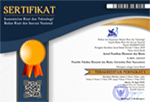What Factors Affect Debt Policy During the COVID-19 Outbreak? Case of Indonesia
DOI:
https://doi.org/10.33633/jpeb.v9i2.10067Keywords:
Free Cash Flow, Firm Growth, debt policyAbstract
This research examines the influence of free cash flow and company growth on debt policy at LQ 45 Companies on the Indonesia Stock Exchange in 2018-2021. We analyze 25 companies listed in the LQ-45 index during 2018-2021, with 100 firms-years observation in total. The sample is selected based on data availability using the purposive sample technique. We analyze the data using multiple regression analysis by using E-views software. The results indicate that Free cash flow has a positive effect on debt policy, while company growth does not affect debt policy. Our research contributes to the development of agency theory, and we use the new measurement of free cash flow. We also analyze the COVID-19 outbreak factors as a control variable, which becomes our important contribution to this research. Keywords:Free Cash FlowFirm GrowthDebt policyReferences
Adnin, M., & Triyonowati. (2021). Pengaruh Kepemilikan Manajerial, Kepemilikan Institusional, Profitabilitas, Dan Pertumbuhan Perusahaan Terhadap Kebijakan Hutang. Jurnal Ilmu Dan Riset Manajemen, 10(6), 1–17.
Afiezan, A., Wijaya, G., & Claudia, C. (2020). The effect of free cash flow, company size, profitability and liquidity on debt policy for manufacturing companies listed on IDX in 2016-2019 periods. Budapest International Research and Critics Institute-Journal (BIRCI-Journal) Vol, 3(4), 4005–4018.
Aliansyah, M., & Ratno, R. (2022). Pengaruh Kepemilikan Institusional dan Ukuran Perusahaan Terhadap Kebijakan Utang (Studi Perusahaan Manufaktur yang Terdaftar di Bursa Efek Indonesia Tahun 2015-2019). Ekomen, 21(1), 1–12.
Apriyanti, V. (2018). Analisis Pengaruh Free Cash Flow, Pertumbuhan Perusahaan, Profitabilitas, dan Kebijakan Dividen terhadap Kebijakan Hutang pada Perusahaan Sub Sektor …. FIN-ACC (Finance Accounting), 3(07), 1125–1137.
Fatma, B. M., & Chichti, J. (2011). Interactions between free cash flow, debt policy and structure of governance: Three stage least square simultaneous model approach. Journal of Management Research, 3(2), 1–34.
Fauzi, A., Azis, M. T., & Hadiwibowo, I. (2022). PENGARUH FREE CASH FLOW, STRUKTUR ASET, PROFITABILITAS DAN PERTUMBUHAN PERUSAHAAN TERHADAP KEBIJAKAN HUTANG. Ekspansi: Jurnal Ekonomi, Keuangan, Perbankan, Dan Akuntansi, 14(2), 130–145.
Gabrilia, F., Octavia, A. D., Meliala, M. S., & Sumaiya, A. (2022). COMPARISON ANALYSIS OF LQ-45 SHARE PRICES BEFORE AND DURING THE COVID-19 PANDEMIC. Indikator: Jurnal Ilmiah Manajemen Dan Bisnis, 6(1), 75. https://doi.org/10.22441/indikator.v6i1.14184
Ghozali, I., & Ratmono, D. (2017). ANALISIS MULTIVARIAT DAN EKONOMETRIKA Teori, Konsep, dan Aplikasi dengan Eviews 10. Badan Penerbit Universitas Diponegoro.
Mahadwartha, P. A., & Ismiyanti, F. (2008). Debt policy, free cash flow hypothesis, and balancing of agency theory through ownership: Evidence from Indonesia. Corporate Ownership and Control, 5(2), 256–263.
Miglo, A. (2020). Zero-debt policy under asymmetric information, flexibility and free cash flow considerations. Journal of Risk and Financial Management, 13(12), 296.
Mufidah, M. N., & Fachrurrozie, F. (2021). Pengaruh Kepemilikan Institusional, Kebijakan Deviden, Pertumbuhan Perusahaan dan Ukuran Perusahaan Terhadap Kebijakan Hutang yang Dimoderasi oleh Rasio Keuangan. JAKA (Jurnal Akuntansi, Keuangan, Dan Auditing), 1(1), 1–14. https://doi.org/10.56696/jaka.v2i1.5145
Muttaqin, M. F., & Adiwibowo, A. S. (2023). Pengaruh financial leverage, likuiditas, ukuran perusahaan dan arus kas bebas terhadap kinerja keuangan pada masa pandemi covid 19. Jurnal Akuntansi of Accounting, 12, 1–12.
Nurdani, R., & Rahmawati, I. Y. (2020). The Effect of Firm Sizes, Profitability, Dividend Policy, Asset Structure, Sales Growth and Free Cash Flow on Debt Policy. AMAR (Andalas Management Review), 4(1), 100–119.
Nurkholik, N., & Khasanah, K. (2022). Pengaruh free cash flow, struktur aset, risiko bisnis dan profitabilitas terhadap kebijakan hutang (Studi Empiris Perusahaan Sektor Industri Barang Konsumsi yang Terdaftar di BEI 2016-2020). E-Jurnal Manajemen Unud, 11(1), 1–21.
Sumarata, R. P. (2022). Pengaruh Struktur Modal , Kinerja Keuangan dan Ukuran Perusahaan Terhadap Nilai Perusahaan Effect of Capital Structure , Financial Performance and Firm Size on Firm Value. 1(2), 79–88.
Supriadi, A. (2022). Pengaruh Free Cash Flow, Sales Growth, Kebijakan Dividen Pada Kebijakan Hutang Perusahaan Property Yang Ada Di Bursa Indonesia. Land Journal, 3(1), 87–101. https://doi.org/10.47491/landjournal.v3i1.1756
Wahyudin, A. (2019). Firm size moderates the effect of free cash flow, firm growth, and profitability on debt policy. Jurnal Dinamika Akuntansi, 11(1), 89–97.
Wahyuni, P. D. (2021). Free cash flow, debt policy and profitability: Analysis the investment opportunity set. European Journal of Business and Management Research, 6(4), 157–162.
Downloads
Published
How to Cite
Issue
Section
License
Copyright (c) 2024 Jurnal Penelitian Ekonomi dan Bisnis

This work is licensed under a Creative Commons Attribution 4.0 International License.
The copyright of the received article shall be assigned to the journal as the publisher of the journal. The intended copyright includes the right to publish the article in various forms (including reprints). The journal maintains the publishing rights to the published articles.
This work is licensed under a Creative Commons Attribution 4.0 International License.


.png)









